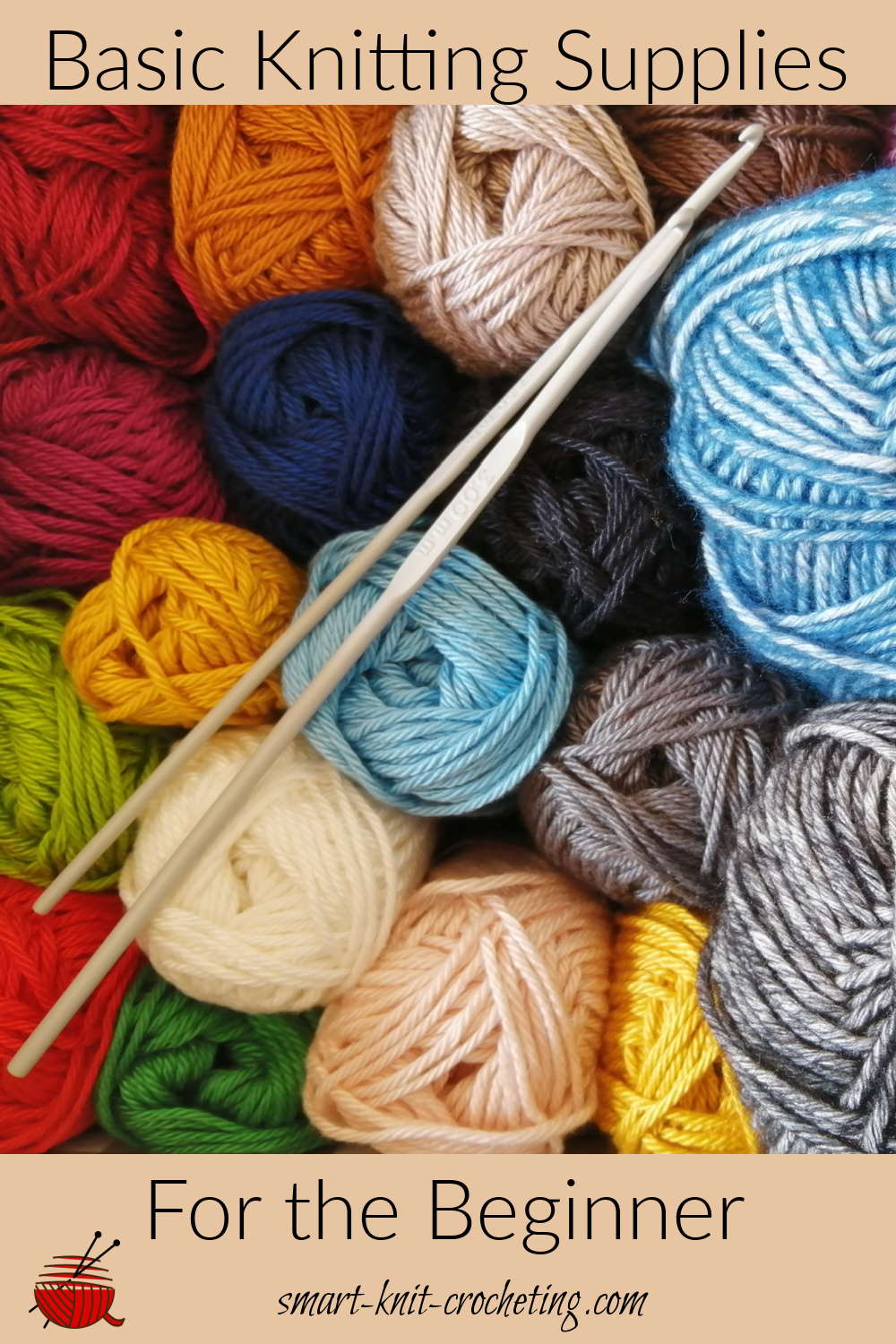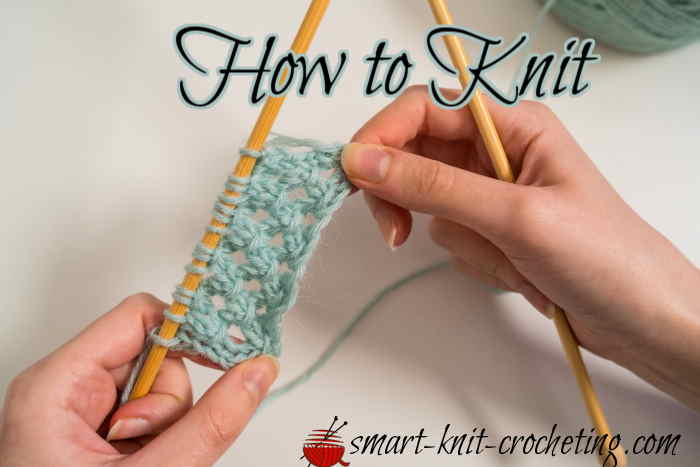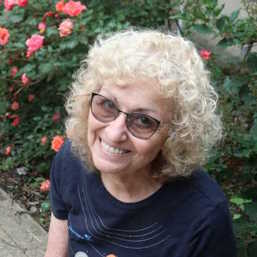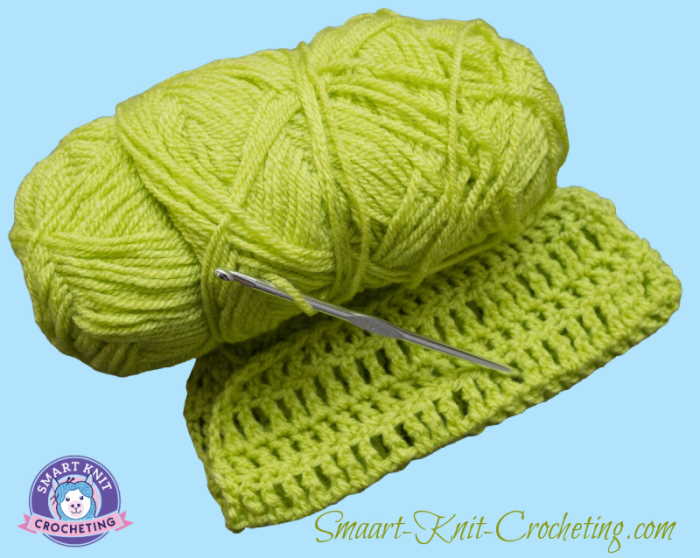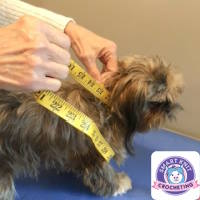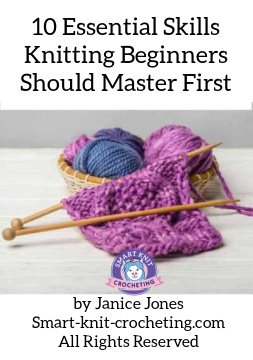- Home
- Must Have Supplies
Knitting Supplies: Detailed List of Products for the Beginner Knitter
Knitting Supplies |By Janice Jones
Starting any new hobby requires a little investment in knitting supplies and accessories, but will a new knitting hobby require you to save for months to acquire the necessary supplies?
 Yarn and Needles are not the only supplies you will need to start your knitting journey
Yarn and Needles are not the only supplies you will need to start your knitting journeyLuckily, the answer is NO. Knitting, at least initially is a very affordable hobby that most people will be able to afford comfortably.
Just what equipment does one need to begin to knit? The short answer is a ball of yarn and a pair of knitting needles. But most people find that they acquire the knitting skills needed rapidly if they have a few more accessories in their tool box.
Here I am going to introduce you to the minimal supplies needed to create basic projects and at the end, I will show you some additional items that you can add to your wishlist as finances allow.
Some of the very basic beginner projects can be created using inexpensive yarns so you may find that you actually save money if you knit for yourself or your loved ones. You may even find that your budget for gifts is reduced when you make it yourself.
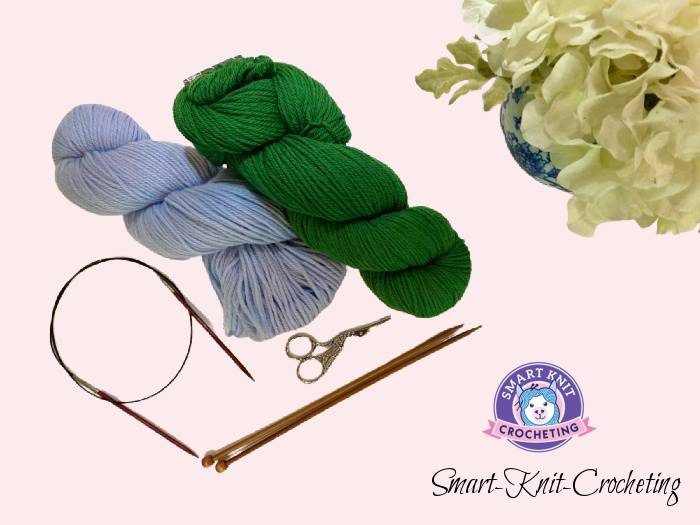 Basic knitting Supplies for the Beginning Knitter (Flower, optional)
Basic knitting Supplies for the Beginning Knitter (Flower, optional)Knitting Supplies for the Beginner
Here are the knitting supplies that I believe you will need to be a successful knitter. You may not use these tools immediately, but as you progress, you will find that they are indispensable and you'll be glad they are already in your knitting kit.
“Really, all you need to become a good knitter are wool, needles, hands, and slightly below-average intelligence. Of course, superior intelligence, such as yours and mine, is an advantage.”
– ELIZABETH ZIMMERMANN
Here are some quick links to the supplies discussed on this page. These are all not necessary for your first few projects, but as you get more "into" knitting, you'll find them to be very helpful. I have some links below if you are interested in finding pricing and availability.
- Yarn
- Knitting Needles
- Scissors or Yarn Snips
- Tape Measures | Rulers
- Stitch Markers
- Row Counters
- Stitch Holders
- Knitting Gauge Tool
- Knitting Needle Point Protector
- Tapestry Needles
- Crochet Hook
- More Goodies for Your Knitting Kit
Yarn
Yarn is probably the very first item a potential knitter will discover. Whether you look online, in a large retail hobby store or in a small speciality yarn shop, you will soon learn that there's no limit to the types of yarn or wool you can acquire.
Just like any hobby enthusiasts who acquires a huge stash of supplies knitters tend to hoard yarn in all colors, weights, and compositions. But before you start spending all your hard earned money on yarn, you should know a little about what you are getting for your money.
Types of Fibers
There are two main types of fibers: Natural and Synthetic. But you may find that yarn also comes in a combination of both.
Natural Yarns
Natural Yarns are anything that is Not human-made and include fibers made from either animals or plants. The plant fibers include cotton, bamboo, hemp, and linen. Animal fibers will be wool, alpaca, angora, cashmere, or silk.
- Alpaca (alpaca)
- Angora (rabbit)
- Cashmere (goat)
- Llama wool (Llama)
- Sheep (wool)
- Silk from the silkworm
More about Wool Yarns
Difference between Wool and Alpaca Yarns
Synthetic Yarns
Synthetic yarns are often made from Acrylic, Nylon, and Polyester. These will be your most inexpensive yarns and will likely be easy to work with and easy to launder. They are perfect for beginners.
Yarn Colors
Here is where it gets exciting. For the beginner, I recommend a solid color so that you can begin to identify stitches and rows. Lighter colors are easier to see than dark colors such as black or navy. Other than that, color is always the knitter’s choice. Don’t ever feel obligated to find the color that is marked on the pattern. You aren’t limited to that. Choose your own, with one bit of advice.
The color and lot number are marked on the label. If you are planning a project that requires more than one skein of yarn, be sure to check the lot number and choose all of the yarn of the same lot number. Two skeins may look identical, but they will not be identical when worked into your project if they have different lot numbers.
How to add color to your knitting
Color Theory for Knitting and Crocheting
Yarn Labels
What you need to know about a yarn should be on the label, thanks to the Craft Yarn Council. Become comfortable reading yarn labels.
The label will include vital information such as the type of yarn, weight of the yarn, the recommended knitting needle or crochet hook to use, laundering instructions, and where it was produced.
Learn more about reading the Yarn Ball Bands
Yarn Weights
There are seven weight categories for yarn, from the thinnest (lightest yarn), which is labeled 1, to the heaviest or bulkiest, which is labeled 7. The information below can be accessed from the Craft Yarn Council.

Lace (also called fingering)
Recommended Needles in U.S. Sizes: 000 to 1; Used For – Lacy patterns, dollies, scarves, and shawls.
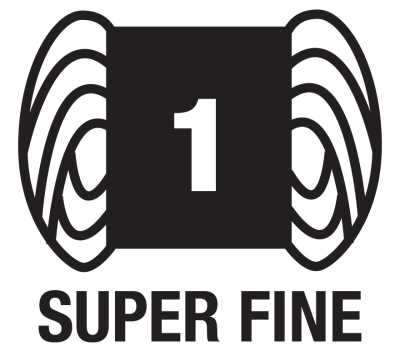
Super Fine (also called a sock, fingering, baby yarn)
Recommended Needle sizes in U.S. 1 –3; Used For – Shawls, mittens, fine sweaters, and garments.
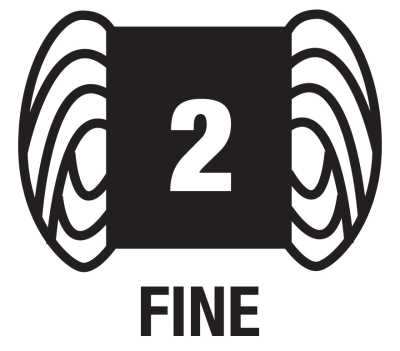
Fine yarn or sports yarn is labeled as a 2 (also called baby, sport yarn)
Recommended Needle Sizes in U.S. 2-5 Used For – All sorts of projects, cardigans, sweaters, socks, hats, and scarves.

Lightweight yarn, also called DK, is labeled with a number 3
Recommended Needle Sizes: 5-7 needle sizes in the U.S.: Often used in sock patterns
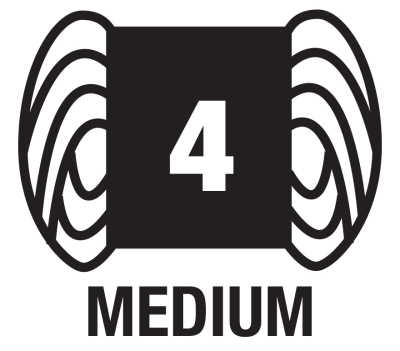
Yarns labeled as number 4 are medium and may also be called afghan yarn.
4. Medium (Also known as worsted, Afghan, Aran) Recommended needle size in the U.S 7-9 Perfect for beginner projects.

Bulky or Chunky yarns are designated as number 5
5. Bulky (also called Chunky) Recommended needle size in the U.S. 9-11 Used For – Chunky crochet projects, rugs, carpets, thick throws, cowls, and scarves.
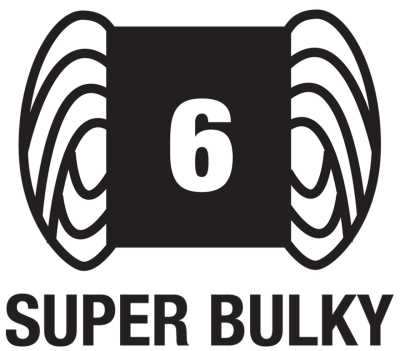
Super bulky or roving yarns are described as the number 6
6. Super Bulky (Also called Roving) Recommended needle size in the U.S. 11-17 Used For – Hats, thick garments, and blankets.

The thickest type of yarn is called Jumbo and is given the number 7
7. Jumbo (also called Roving) Recommended needle size in the U.S. 17 and larger Used For – Jumbo and extreme crochet, like scarves, afghans, and household accessories.
Learn more about Yarn Labels Here.
The thinner the yarn, the smaller the needle you will use. The label will generally indicate what size needles (knitting) or hook size (crocheting) are best used with a particular size yarn.
If you are a beginner, I recommend you begin with a number 4 or 5. These are the easiest weights to manage. If you prefer the bulky yarn, 6 or 7 weighed yarn is also relatively easy. Stay away from the superfine yarns (1 to 3) until you have a few projects under your belt.
Knitting Needles
The most obvious tool that a knitter will need is a pair of knitting needles. Don’t get knitting and crocheting confused. Knitters use two needles to knit, whereas crochet is done with one hook.
There are many different types of knitting needles on the market today that choosing the right one may seem confusing. Before you purchase that first pair of needles, read through this section thoroughly. You may find that you save quite a bit of money in the long run.
Four basic kinds of needles
There are three basic types of needles, but there is much variety, even within these three types. The three types of knitting needles are straight, circular, double-pointed and cable needles.
Straight needles

These needles are precisely what they say they are. They are straight with a point at one end and a knob at the other end. They usually come in different lengths. Longer ones are used to make garments such as sweaters, and the shorter ones are perfect for scarves.
Circular Needles

Circular needles contain two short needles with pointed ends connected with a plastic cord. These needles are great for large projects or working in the round, such as a hat or seamless sweater. You can also use circular needles to knit straight rows, such as is done making a scarf.
These needles vary by needle size and by cord length, from 9 inches to 60 inches. You can purchase each one individually, or you can get a kit that includes different needle sizes and cords that you can interchange freely.
Double-Point Needles

Double-point needles are shorter needles that have a point on either end. They are typically sold as a group of four needles. They also come in different sizes.
They are needed if you plan to make small projects such as mittens. You may start a project using circular needles and then switch to four double-pointed needles to finish.
Cable Needles
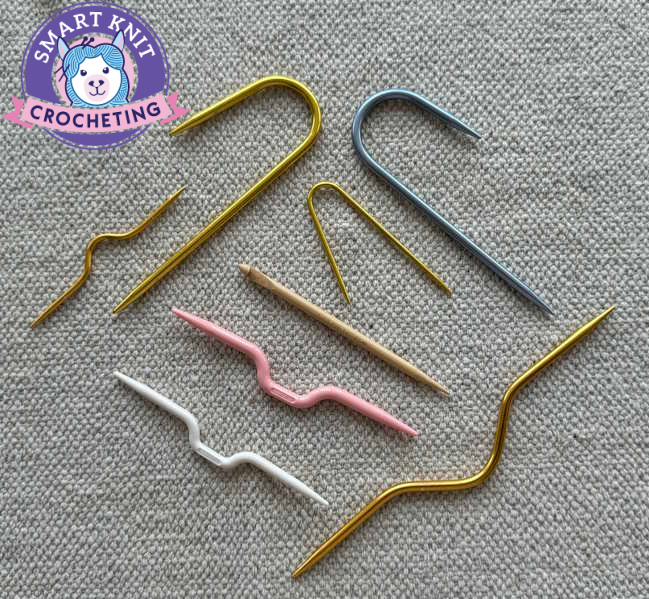
I mention these here because they are considered a type of needle, but they are just another tool that the beginner is not likely to need immediately.
Cable needles are used to hold stitches when making cable knit patterns. You’ll find these come in acrylic/plastic, wood, and metals and are shaped differently. Some knitting kits will come with these as an additional accessory.
Read more about Knitting Needles
Knitting Needles are Manufactured from Various Materials
The majority of needles available include bamboo or wooden, plastic/acrylic, or metal/aluminum. Each has its advantages and disadvantages.
Bamboo Needles

This type of needle seems to be the most popular, especially among beginners because they are gentle on the hands and joints.
They are very smooth, allowing stitches to move quickly on and off the tips of needles, but they also prevent stitches from sliding off the needle when not intended. They are perfect for anyone who is not a fast knitter. They are easy to obtain and inexpensive. The other plus is that they don’t break easily.
As a natural resource, bamboo is environmentally friendly, so you can feel good about using them.
Bamboo is used to make all three types of knitting needles, straight, circular, and double-pointed.
Metal/Aluminum Knitting Needles

Most metal needles are made of aluminum these days, but you may also find them made with steel, stainless steel, brass, or even nickel. You can find them in all three types: Straight, Circular, and double-pointed. These are the traditional needles that our grandmothers used, and if you are lucky, you might even locate a vintage one.
They are by and large the most durable needle and very strong. You may find these needles last for a very long time. There is little likelihood of them breaking, but some of the cheaper ones will bend.
Their smooth, sleek surface makes knitting quickly very easy, but they can be slippery. Inexperienced knitters will find that losing a stitch is much easier when working on steel needles.
Plastic Knitting Needles
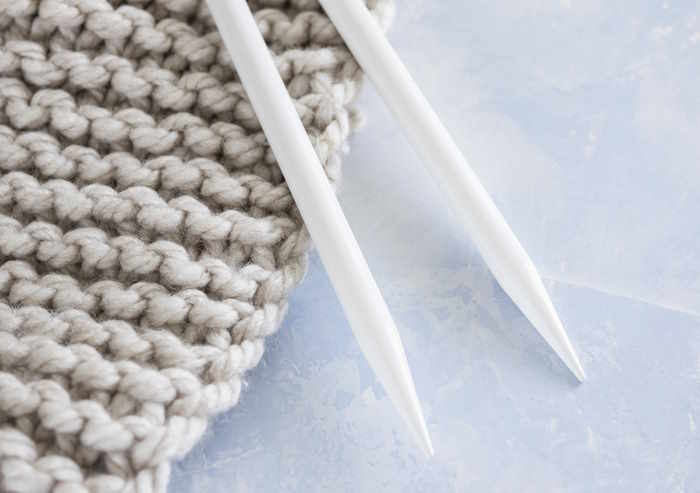
Plastic or Acrylic knitting needles also have advantages. They are very affordable
They are neither slippery nor too sticky, which means your yarn will slip easily over the needles. This is a good thing for beginners or anyone learning to knit. These are the type of needle you will find most frequently in knitting kits for children. Less sticky than bamboo and less slippery than metal, the smooth surface of plastic lets your yarn glide smoothly. This feature is useful for anyone learning to knit.
You’ll find plastic needles in straight, circular, or double pointed designs,
They are also lightweight, which means that if you decide to make a project using very chunky yarn, it won’t feel like you are tugging around a couple of weights. Many of the super big jumbo knitting needles are made with plastic.
Learn more about Knitting Needles and How to choose the correct size in our article about Knitting Needle Conversion Chart
Knitting Needle Kits
You can purchase any type of needle individually or as part of a kit. It may be more economical for you purchase a set of needles initially and then add to the set as needed.
My choice for knitting needle kits:
This one has everything mentioned on this page except for the yarn. This is the fastest way to get everything you need in one convenient package and then go out to your local store and choose some lovely yarn to start your new hobby. Click on the picture below to check on price and availability
Interchangeable circular needle kit
This kit is a bit costly initially, but I promise you that you will never need to purchase another circular needle.
The kit includes 12-Needle sizes(US) (3, 4, 5, 6, 7, 8, 9, 10, 10.5, 11, 13, 15) 5-cord sizes (16, 24, 29, 36 and 48-inch ) 60 combinations. All are interchangeable.
If you had to purchase (and store) all the needles that this kit can provide, you would need to purchase 60 pairs of needles individually. They are available on Amazon so click on the photo below to check them out.
Double Pointed Knitting Needle Kit
This is a great deal for purchasing double pointed needles. It includes one set of each sizes US 0 (2 mm), US 1 (2.25 mm), US 1 (2.5 mm), US 2 (2.75 mm), US 2 (3 mm), and US 3 (3.25 mm). You have the choice of purchasing 4 inch, 5 inch or 6 inch long needles.
Straight Stainless-Steel Knitting Needle Kit
I love this kit because it provides you with all the most popular sizes, and needles are made with stainless steel. Choose from either the 9.8-inch needles for smaller projects or the 13.8-inch longer needles for large projects.
Knitting Supplies: Ruler or Tape Measure
This is such a simple little object that nearly every household has at least one. I like to keep the soft tape measure used for sewing projects and a rigid ruler for measuring gauge.
Another neat little multipurpose tool is a gauge rule that also includes holes to measure the diameters of your knitting needles. Most stainless steel and aluminum needles have ends that mark the size of the needle.
Many bamboo needles do not. Before you can use the needle, you need to determine what size it is, and you do that by poking the tip of the needle through a couple of holes until it goes through easily but snugly.
Scissors or Yarn Snips
You can use any household scissor, but unless you have a very sharp pair that snips through yarn quickly, you will end up more frustrated, and the yarn will fray. Find one that you can devote entirely to your knitting. You can purchase vintage types or yarn snips in packages. Both are very inexpensive.
Knitting Supplies: Stitch Marker
All but the easiest projects will require that you use a stitch market or two. Don’t worry, these are inexpensive too and often come in larger kits. Be sure to get some in different colors, so they stand out from the yarn you are using.
Row Counter
Rather than continually go back and count rows, it’s easier to click on a counter each time you finish a row. These little counters fit on the needle, making them very convenient. I haven’t seen too many of them for huge knitting needles, so you may need to choose a different type of counter.
You can wear this one around your neck using the cord included.
Knitting Needle Point Protector
These are little rubber tips that fit the needle tip and prevent stitches from slipping off when you are not working. They come in sizes, so be sure to pick one that will fit the size of your needle. Again, if you plan to purchase a kit, be sure these are included; otherwise, you will want to order them separately.
Knitting Supplies: Tapestry Needles
(Also called darning needles, wool needles)
Unless you want the yarn ends flying around, you will wish to use a tapestry needle to weave in the ends. Also, many projects require you to sew pieces together to make the finished product. They are also inexpensive and come in plastic or metal and straight or with curved ends. The curved or bent end needles are the easiest to use in knitting.
Crochet Hook
I know it's going to sound odd, but I always keep a crochet hook in my knitting bag. Why? Because crochet hooks are used when I drop a stitch.
You don't need one, but the hook helps me pick up a dropped or lost stitch and yes, at some point you will lose a stitch. I guarantee it. Chose a medium size hook such as US F or G (3.75 to 4.00 mm). My favorite size is 4.5 mm which is usually not included in sets.
Also, believe it or not, a crochet hook can also be used to bind off your knitting project.
More Knitting Supplies for Your Kit
There are other supplies that you will see as you progress through the tutorials and project patterns. You'll encounter pom pom makers, yarn bowls, ball winders, stitch holders and many more.
In the photo at the beginning of this article you may have noticed a couple additional items that I have not mentioned.
Notebook and Pencil: This is not critical, but if you are a visual learning you might like to have a small notebook nearby to keep tract of stitches and pattern instructions. You may also find you make changes to a pattern that you want to record. Some other items I keep in my notebook include alterations to recommended gauge and colors and color lot numbers. All of this can be done on a tablet or smart phone so a notebook may not be a necessary item for you.
Clean white cloth: I like to keep a small piece of fabric or in this case a pillow case with my knitting case. I place that on my lap especially when I'm working with dark colored yarns. It helps reflect the light and make it easier to see individual stitches.
Craft Lights and neck lights: If you are knitting at night with artificial light or low light, you may want to consider an extra light source. This is the one I love and use every evening. It gives me all the light I need even if I'm sitting in a darkened room. Click on the image to check price and availability on Amazon.
Knitting Starter Kit for Beginners: Top 3 Choices
I promised that I would direct you to a knitting starter kit, so here are my three top picks. They all include the yarn, needle, and instructions, and some also have other accessories. Please do the math before you decide to purchase these kits. They are ideal as gifts but may not be practical if you are serious about learning to knit yourself.
Baby Blanket
This baby blanket kit provides enough merino wool, pattern book, knitting needles, and a tapestry needle to create a 55cm by 68 cm baby blanket -- perfect gift to give to some beginner or make it yourself as a lovely baby gift.
Learn to Knit Socks
Socks can be tricky and may not be the perfect project for beginners, but if you want to learn how to work on four needles and create some socks for the whole family, this may be the right choice for you.
Kit contains 6 skeins of Knit Picks Stroll Sock Yarn (2 each of colors Blue, White, and Dandelion), a set of six US size 2 (2.75 mm) 6-inch double-pointed needles, a tape measure for sizing, view sizer, stitch markers, steeking scissors, a yarn needle for seaming and weaving in ends and a project bag.
Scarf Kit
Knit this lovely scarf using the stockinette stitch in a chunky yarn. The kit includes instructions, needles, and enough yarn to produce a scarf for either a man or a woman. This kit can be given to a friend or make yourself.
Organizing All Of Your Knitting Supplies
Many beginning knitters rely on the same plastic bags used to carry home their purchases from the store. That's fine for the first project, but soon you will want something more durable, especially if you travel with your knitting.
Supplies tend to multiply and before we know it, we can't find what we need because we haven't properly organized our stuff. If this sounds like you, be sure to check out my article about organization where I detail what I did with all of "my stuff."
